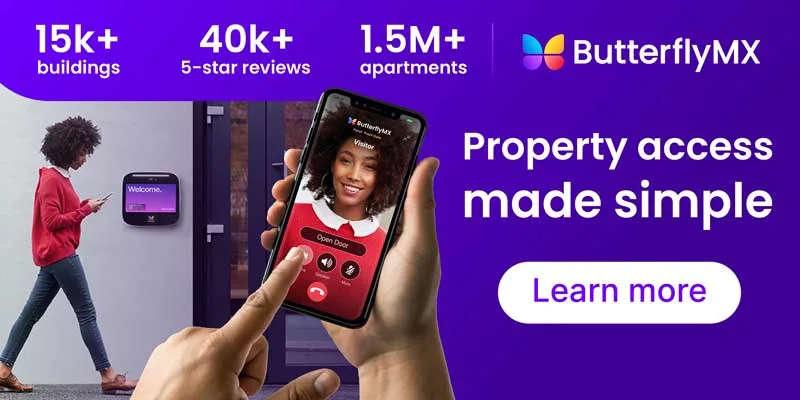Key takeaways
- Media access control is a protocol that controls how networks transmit data between two devices.
- Media access control facilitates the flow of traffic within a computer network, ensuring that devices communicate safely and effectively.
- The three major media access control types are contended, controlled, and contention-free access protocols.
- Examples of MAC are Ethernet, WiFi, Bluetooth, token ring, and fiber-distributed data interfaces.

The future of work requires seamless connectivity while ensuring efficient and secure communication between devices. So, modern media access control types are emerging as a secure communication protocol that controls how devices gain network access in order to transmit data safely.
Read on to learn what media access control is, why it’s important, and how it works. Then, explore examples of different media access control types in cybersecurity.
In this post, we cover:
- Media access control methods
- What is media access control?
- How do different media access control types work?
- What are examples of media access control?
- Media access control FAQs
Media access control methods
The most common types of media access control methods are:
- Carrier sense multiple access (CSMA)
- Token passing
- Time division multiple access (TDMA)
- Frequency division multiple access (FDMA)
- Code division multiple access (CDMA)
- Demand priority protocol
Carrier sense multiple access (CSMA)
In the CSMA method, device listen to a communication channel and check if it’s clear before transmitting data.
Token passing
Token passing entails devices taking turns using a token that circulates in a network. Then, permission is granted to the device holding the token to transmit data.
Time division multiple access (TDMA)
In a TDMA model, a communication channel is divided into time slots. Then, devices take turns using these slots to transmit data.

Frequency division multiple access (FDMA)
In FDMA, a communication channel is divided into frequency bands. Then, each device is assigned a specific frequency band for transmission.
Code division multiple access (CDMA)
In CDMA models, devices share the same frequency band simultaneously, but each device uses a unique code to differentiate its signals.
Demand priority protocol
Demand priority protocols involve devices requesting access to the communication channel based on demand. Then, the protocol allocates access.
What is media access control?
Media access control, also known as medium access control or MAC, is a protocol that controls how networks transmit data between two devices.
In essence, a media access control protocol prevents data collisions when multiple networks transmit information simultaneously.
Furthermore, media access control in computer networks contains a MAC sublayer that facilitates communication between hardware and a wired, wireless, or other transmission medium.
How do media access control types work?
Media access control facilitates the flow of traffic within a computer network. So, MAC ensures that devices share communication safely and effectively.
Every device connected to a network, like your laptop, smartphone, or smart lock, is assigned a unique identifier known as a media access control address that distinguishes one device from another.
So, when a device wants to send or receive information on the network, it checks with the MAC. Then, the MAC determines whether or not it’s safe to send the data between said devices.
However, only one device can communicate at a time to avoid a data collision. So, the MAC protocol ensures that each device takes its turn, creating a smooth flow of information.
In essence, media access control acts as a well-organized coordinator that ensures devices in a network communicate in an orderly fashion. So, your emails, videos, and other data reach their destination without getting lost in digital traffic.
Discover our complete beginner’s guide to access control:
What are the three major types of media access control MAC protocols?
The three major media access control types are contended, controlled, and contention-free access protocols.
Let’s delve deeper into the three types of media access control protocols:
- Contended access. Also known as random access, this model involves multiple devices contending for access to the communication channel. The first device to “speak” gets to transmit its data, and others need to wait. For example, this method is often used in Ethernet networks.
- Controlled access. Popularly known as scheduled access, this model requires that devices follow a predetermined schedule or sequence to access a communication channel. So, it’s a more organized approach, preventing collisions and ensuring a fair distribution of access time.
- Contention-free access. Otherwise known as hybrid access, this protocol allows for a combination of contended and controlled access methods. So, hybrid access provides a balance between efficiency and organization. In this model, devices may contend for initial access, but once granted, they follow a more structured approach.

What are examples of media access control?
Common examples of media access control are:
- Ethernet MAC. Ethernet cables are commonly used in wired networks and control access to physical network mediums, ensuring data protection by guaranteeing that devices take turns transmitting data.
- WiFi MAC. Used in wireless networks, this MAC protocol manages communication between devices by coordinating access to shared networks.
- Bluetooth MAC. In wireless personal area networks (WPANs), Bluetooth MAC regulates communication for devices like smartphones, headphones, and other short-range devices.
- Token Ring MAC. Utilized in older network set-ups, token rings are assigned to devices so only ones with a token can transmit data.
- Fiber-Distributed Data Interface (FDDI) MAC. Common in high-speed networks, this interface uses a dual-ring architecture with a token-passing protocol to transfer data efficiently.
Media access control FAQs
Here are some commonly asked questions about media access control:
- What is an example of a media access control address?
- Is media access control hardware or software?
- What are the classifications of MAC protocols?
What is an example of a media access control address?
A MAC address is a unique identifier assigned to a network interface card (NIC) or network adapter. Moreover, they’re typically represented in a 12-digit number, separated into six groups of two characters each.
For example, a MAC address usually looks like this:
02:42:ac:11:00:02
A MAC address like this one is used to identify a device on a network.
Is media access control hardware or software?
MAC functionality is hardware-based because it’s integrated into the network interface card (NIC) or network adapter, which are both hardware components of a computer or device.
However, there are software components that interact and communicate with the media access control layer to enable higher-layer network functionality.
What are the classifications of MAC protocols?
The classification of MAC protocols is contention-based, controlled access, and contention-free MAC protocols.







